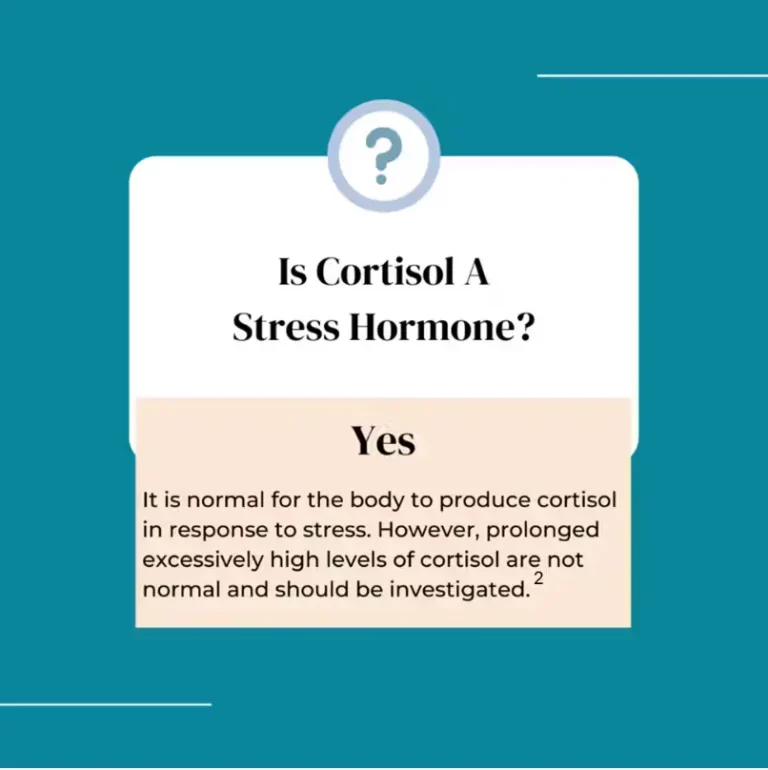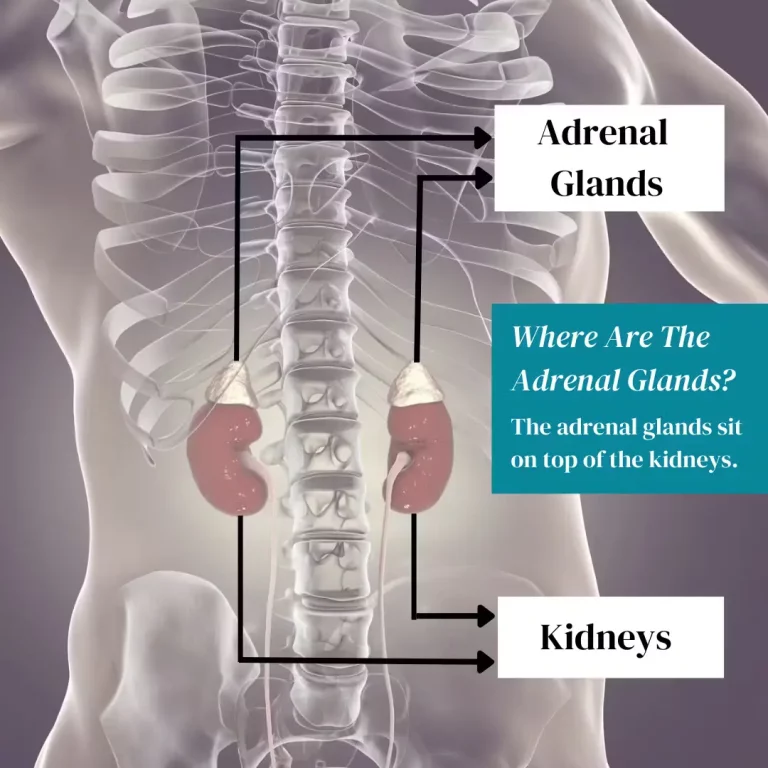Understanding Dexamethasone Suppression Tests
There are 3 types of dexamethasone suppression tests. The low-dose dexamethasone suppression test (DST) is the most commonly used on in clinical practice. It is a diagnostic procedure primarily utilized to screen for excess cortisol production, such as in cases of Cushing’s syndrome. This test is particularly helpful in detecting dysregulated cortisol hypersecretion in adrenal incidentalomas, which are adrenal tumors discovered by chance during imaging for other medical reasons.
The low-dose dexamethasone test is primarily used to screen for excessive cortisol production (Cushings syndrome). The test helps determine if the body is able to respond to an external dose of steroid, in this case dexamethasone, by lowering or suppressing its own secretion.
Why Is The Low Dose Dexamethasone Suppression Test Done?
The low dose dexamethasone suppression test is usually ordered by your healthcare provider to learn more about your cortisol hormone. Usually, your primary care doctor or your endocrinologist will order this test. Your doctor may order this if you are a patient who has signs and symptoms of excess cortisol production in your body. It can help to diagnose Cushings syndrome and is also an essential diagnostic tool for detecting dysregulated cortisol hypersecretion in cases of adrenal incidentalomas.
An abnormal low-dose DST test result indicates excessive release of cortisol, thereby suggesting Cushing’s syndrome. This disorder may be caused by an adrenal tumor or other factors disrupting the cortisol production process.
Additionally, an ACTH level may be checked as well, to provide insight onto the source of overproduction. If ACTH is low, then the source of cortisol excess may be from the adrenal gland. If ACTH is normal to high, the source may be from the pituitary gland.
This information can help healthcare professionals determine the source of excess cortisol production in the body and develop an appropriate treatment plan for the patient.
How Is The Low Dose Dexamethasone Suppression Test Done?
During the low-dose overnight DST, a patient is given 1 milligram of oral dexamethasone, a synthetic corticosteroid, at 11 p.m. This is typically given to the patient as a dexamethasone pill which the patient will pick up from the pharmacy. A blood sample is then drawn at 8 a.m. the following morning to measure the cortisol level. If the patient’s cortisol level is suppressed to below 1.8, the test is considered normal. However, if the cortisol level remains at or higher than 1.8, this is considered a positive test. Basically, since the the cortisol levels do not decrease adequately, it may suggest the presence of Cushing’s syndrome or another issue contributing to excessive cortisol production.
While the low-dose DST is an important tool in screening for cortisol oversecretion, it is crucial to note that there are limitations to the test. The test is less reliable for determining the source of Cushing’s syndrome, and there can be a false positive or false negative result due to various factors, such as the intake of certain medications.
It is important to note that some factors may affect the accuracy of the test, including medications such as oral contraceptives or other hormonal medications. Therefore, patients should inform their healthcare providers about any medications they are taking before undergoing the low dose dexamethasone suppression test.
Patient Preparation For Low Dose Dexamethasone Suppression Test
Before the test, it is important for patients to inform their doctor of any medications they are currently taking, as some medications can interfere with the test results. The patient may need to stop taking certain medications or adjust dosages under the guidance of a healthcare provider before the test. Additionally, patients should avoid consuming alcohol and engaging in strenuous physical activity 24 hours before the test, as these factors can also affect cortisol levels.
Sample Collection
The low dose dexamethasone suppression test can be carried out as follows: the patient takes a 1- mg tablet dose of dexamethasone at 11 PM the night before the lab test. A blood test is then done the following morning at, around 8 AM, to measure the amount of cortisol in the blood. Typically, an ACTH level and a dexamethasone level is also drawn.
The 2-day low dose dexamethasone suppression test can also be used as a screening tool. This test is not commonly performed because of its long duration, especially in light of the findings that the sensitivity and specifity of the simpler tests are comparable. In the two-day extended (three-day) test, the patient takes 0.5 mg low dose of dexamethasone orally every six hours, for a total of eight doses. BloodTheir urine is collected over a 24-hour period on days two and three, and blood samples are drawn at specific time intervals during the test.
In both cases, the test measures cortisol levels to determine whether the body has effectively suppressed cortisol production in response to dexamethasone.
Test Duration
The duration of the low dose dexamethasone suppression test varies based on the chosen method. The overnight test takes approximately 10-12 hours, from the time the patient takes the dexamethasone until the blood sample is drawn the following morning, whereas the extended (twothree-day) test takes a total of 4872 hours., including three days of taking dexamethasone and urine collection. The chosen method may depend on factors such as patient preference, scheduling, and the healthcare provider’s assessment.
HPA Axis
The hypothalamic-pituitary-adrenal (HPA) axis is a complex system of neurohormones that works by a negative feedback mechanism. This axis regulates the physiological mechanisms of stress reactions, immunity, and fertility. The HPA axis consists of three primary glands:
Hypothalamus: Located in the brain, the hypothalamus synthesizes and releases corticotropin-releasing hormone (CRH) in response to stress.
Pituitary Gland: This pea-sized gland, situated below the hypothalamus, secretes adrenocorticotropic hormone (ACTH) upon receiving CRH from the hypothalamus.
Adrenal Glands: These butterfly-shaped glands sit on top of each kidney. When ACTH stimulates them, cortisol secretion increases.
Low Dose Test Vs High Dose Test
There are two different types of dexamethasone suppression tests. The low-dose test and high-dose test dexamethasone suppression screening tests are used to diagnose conditions related to abnormal cortisol production. Both tests involve administering dexamethasone, a synthetic steroid, and measuring how much cortisol is in the blood after a specified time period. However, there are differences in the dosage and purpose of each test.
In the low dose dexamethasone suppression test, 1 milligram of dexamethasone is given at 11 p.m., followed by a blood sample taken at 8 a.m. the next morning for cortisol measurement. This test is primarily used to determine if the body is producing too much adrenocorticotropic hormone (ACTH). If cortisol levels are suppressed after taking dexamethasone, it suggests normal cortisol regulation.
On the other hand, the high dose dexamethasone suppression test involves a higher dose of 8 milligrams of dexamethasone given at 11 p.m., with a cortisol measurement taken the next morning. This test is often used to identify the original cause of increased cortisol production. Tumors that produce ACTH outside of the pituitary gland do not contain active glucocorticoid receptors and do not respond to steroid negative feedback. , specifically, if the issue originates in the pituitary gland, indicating Cushing’s disease.
As far as the high dose dexamethasone suppression test is concerned, some experts favor direct sampling of ACTH levels from the inferior petrosal sinuses to determine whether there is ACTH overproduction from the pituitary gland.Both low dose and high dose tests can be conducted overnight or as standard three-day tests. In the standard low dose test, 0.5 mg of dexamethasone is given every six hours from day 2 onwards, while 2 mg is administered in the standard high dose test.
Related: Adrenal Adenoma: What Every Patient Should Know
Low Dose Dexamethasone Test Vs High Dose Dexamethasone Test
The low dose test screens for the presence of cortisol hypersecretion. The high dose test determines whether the source of cortisol overproduction is driven by ACTH from the pituitary or ATCH from an external tumor. The high dose test evaluates excessive ACTH production. On the other hand, the high dose test focuses on identifying whether the source of the problem is the pituitary gland. Both tests can be conducted with an overnight or standard three-day protocol.
False Test Results For Dexamethasone Suppression Test
It is essential to consider that false test results can occur due to various factors, such as certain medications, obesity, depression, and stress. Furthermore, false results are more common in women than men. Careful interpretation of the test results and consideration of the patient’s medical history and current conditions are crucial for an accurate diagnosis.
Due to various reasons, such as medications, obesity, stress, and depression, false test results can occur, leading to misdiagnosis or confusion about the patient’s condition. It is essential to note that false results are more common in women than in men.
There are certain medications that can interfere and cause an abnormal test result, either by decreasing or increasing cortisol levels. These medications include, but are not limited to:
- Anticonvulsants
- Estrogens
- Barbiturates
- Antidepressants
Patients should inform their healthcare providers of any medications they are taking to ensure accurate test results and proper interpretation.
Interpreting The Results Of The Dexamethasone Suppression Test
When evaluating the results of a low dose dexamethasone suppression test, it is essential to distinguish between normal and abnormal outcomes. This section explains the interpretation of both normal and abnormal test results. It is important to note that interpretation of a positive result is improved by using multiple screening tests, including urinary-free cortisol, late-night salivary cortisol, or dexamethasone suppression test.
Normal Results
A normal outcome of a low dose dexamethasone suppression test indicates effective suppression of cortisol production. In this case, the 8 a.m. plasma cortisol level is lower than 1.8 mcg/dL or 50 nmol/L after taking 1 mg of oral dexamethasone the night prior to blood draw.overnight testing, or urinary free cortisol on day 3 is lower than 10 mcg/day or 280 nmol/L during standard testing (UCSF Health). Normal results suggest that the patient does not have Cushing’s syndrome, a condition characterized by excess cortisol production.
Abnormal Results
Abnormal results in a low dose dexamethasone suppression test may indicate the presence of Cushing’s syndrome. Abnormal results warrant further diagnostic evaluation to determine the underlying cause and help guide treatment strategies.
The accuracy of results depends on a number of factors. For example, the too rapid absorption or metabolism of dexamethasone may falsely lead to non-suppression of cortisol. Conditions that cause increased cortisol binding globulins can also lead to falsely high cortisol levels. Conversely, conditions that lead to slow metabolism or breakdown of dexamethasone can lead to an excessively high drug level that nullifies the intended result, leading to cortisol being falsely low.
Decreased cortisol binding globulin levels can produce a falsely low cortisol value as well. It is important to note that various factors can contribute to inaccurate test results, including medications, stress, and certain medical conditions. Therefore, interpreting the results should be done in conjunction with the patient’s medical history and any clinical signs or symptoms they exhibit.
Limitations Of Low Dose Dexamethasone Suppression Test
The low dose dexamethasone suppression test is one of a few screening tools that aims to screen for the presence of Cushing’s syndrome. As discussed above, there are conditions that may lead to false positive or false negative results. It is important to use other screening tests, along with a careful assessment of a patient’s signs and symptoms, when approaching diagnosis of Cushing’s syndrome. One limitation of the low-dose dexamethasone suppression test is its decreased reliability in detecting corticotropin (ACTH)-dependent Cushing’s syndrome.
Alternatives To The Test
Although the low dose dexamethasone suppression test is a widely used screening method for Cushing’s syndrome, several alternative diagnostic tests and procedures are available. These adjunct tests should also be performed. These tests, when taken into consideration along with the 1- mg dexamethasone suppression test, improves the validity of the diagnosis of Cushing’s syndrome.alternatives can provide additional information and or be used when the low dose dexamethasone suppression test is inconclusive or contraindicated.
One of these screening tests alternative is the 24-hour urinary free cortisol (UFC) test. This test measures the level of cortisol in a patient’s urine collected over 24 hours. Elevated UFC levels can indicate excess cortisol production and suggest the presence of Cushing’s syndrome. Though not as specific as the low dose dexamethasone suppression test, the UFC test has the benefit of being noninvasive and easy to perform.
Another test alternative is the late-night salivary cortisol test, which measures the level of cortisol in saliva samples taken late at night. This test can provide useful diagnostic information, as cortisol levels in healthy individuals follow a circadian rhythm that dictates a fall to its lowest level late at night. typically decrease during nighttime. Persistently elevated late-night salivary cortisol levels may be indicative of Cushing’s syndrome.
ACTH stimulation tests are also used to evaluate adrenal function. These tests involve the administration of synthetic adrenocorticotropic hormone (ACTH) and subsequent measurement of the body’s cortisol response. In individuals with normal adrenal function, cortisol levels increase in response to ACTH administration. In contrast, a blunted or absent cortisol response may indicate adrenal insufficiency or the presence of other adrenal disorders.
After screening and confirmatory testing strongly suggests the presence of Cushing’s syndrome,In some cases, imaging studies such as computed tomography (CT) scans or magnetic resonance imaging (MRI) may be utilized to assess the size, shape, and function of the adrenal glands, pituitary gland, or other relevant anatomical structures. These imaging techniques can help identify tumors or other abnormalities that could be contributing to cortisol dysregulation.
Dexamethasone Suppression Test: Summary
The low-dose dexamethasone suppression test is an essential tool for screening for excessive cortisol production, also known as Cushing’s syndrome, and identifying dysregulated cortisol hypersecretion in adrenal incidentalomas. This test involves administering a low dose of dexamethasone, which helps to suppress the release of ACTH, further leading to a decrease in cortisol levels in normal individuals. Then a healthcare professional will take a sample of your blood to measure your plasma cortisol levels.
An abnormal result in the low-dose test may indicate the presence of Cushing syndrome due to excessive cortisol release, which could be caused by an adrenal tumor or other factors.
Some studies have suggested that under certain circumstances, a two-day low dose dexamethasone suppression test may provide more accurate results, particularly in women taking oral contraceptives PubMed.
Clinicians should be familiar with this test as an initial screening test for hypercortisolism. Overall, the low-dose dexamethasone suppression test proves to be a useful diagnostic tool for healthcare professionals. However, it is essential to consider specific patient conditions and other factors when interpreting the results to ensure accurate diagnosis and subsequent treatment.
We discuss products we think are useful to people. If you buy something through our links, we may earn a commission. Remember to check with your personal physician to see if a product recommended is right for you.








